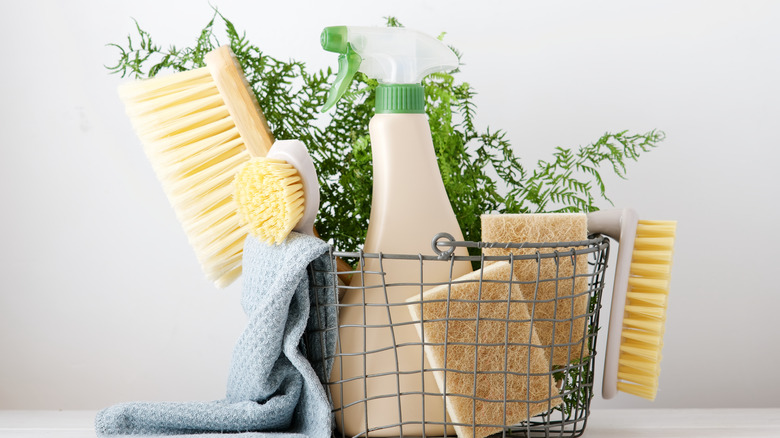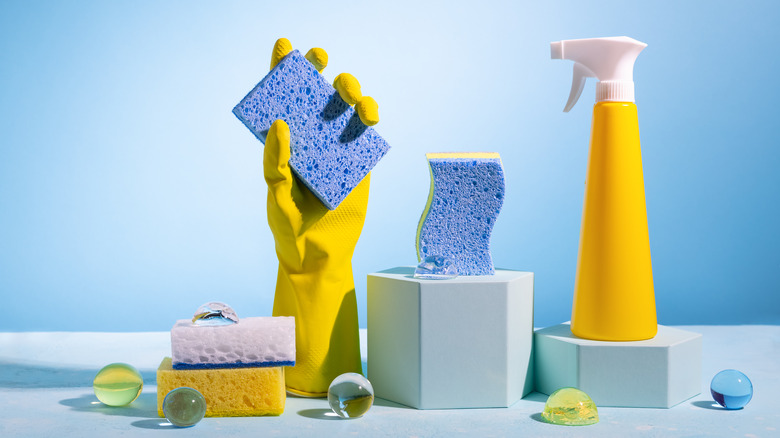Why You Should Stop Using Sponges Immediately
How do you clean your dishes? If you use a typical dish sponge, it may be time to change your method. A study published in Scientific Reports found 362 different kinds of bacteria sitting in the crevices of household dish sponges, at numbers of about 54 billion per cubic centimeter. These sponges are the perfect breeding ground for bacteria because they are porous and lock in moisture and food particles.
"One problem we have with bacteria and microbes is that we cannot see them. And if you don't see them, you don't believe they are there," explained Markus Egert, professor of microbiology and hygiene at Furtwangen University, when talking to TIME. Luckily, a majority of the microscopic bugs found in the study weren't the ones that cause food-borne illnesses, like E. coli and salmonella. However, Egert told TIME that he suspects if you look hard enough, you'll be able to find these types of bacteria.
Sanitize your sponge every couple of days
Even though dish sponges are commonly covered with soap before usage, this doesn't help to clean the sponge. The microbes found in this study were resistant to soap — so when sanitizing your sponge, it's best to go with bleach. In a solution of 3 tablespoons of bleach per quart of water, soak your sponges for five minutes before rinsing them out, according to Good Housekeeping. You can also sanitize a sponge by running it through the dishwasher, where the heat will be effective in killing bacteria. Sponges should be sanitized every couple of days and replaced every other week.
Plastic or silicone brushes can be a good alternative if you're looking to get rid of dish sponges completely, according to TIME. They're a better choice because they are easier to clean and not as prone to trapping bacteria. If you make the switch to a brush, they should be sanitized in a dishwasher every week and replaced yearly. Of course, the easiest way to make sure your dishes are clean is using a dishwasher. If you use a dishwasher, make sure it isn't set to an energy-saving mode — the hot water is what makes them so effective in sanitizing.

